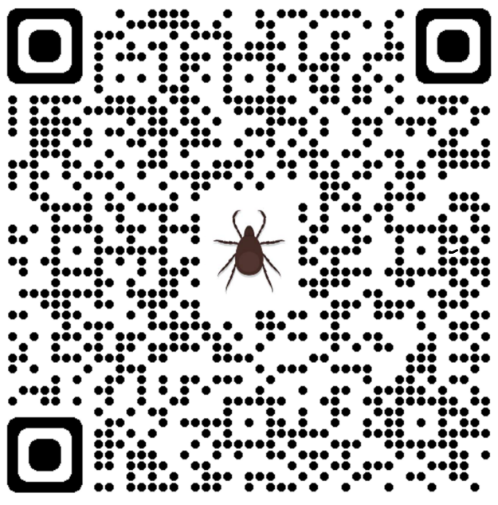Get Ticks Off… Not “Ticked Off”
go.ncsu.edu/readext?945167
en Español / em Português
El inglés es el idioma de control de esta página. En la medida en que haya algún conflicto entre la traducción al inglés y la traducción, el inglés prevalece.
Al hacer clic en el enlace de traducción se activa un servicio de traducción gratuito para convertir la página al español. Al igual que con cualquier traducción por Internet, la conversión no es sensible al contexto y puede que no traduzca el texto en su significado original. NC State Extension no garantiza la exactitud del texto traducido. Por favor, tenga en cuenta que algunas aplicaciones y/o servicios pueden no funcionar como se espera cuando se traducen.
Português
Inglês é o idioma de controle desta página. Na medida que haja algum conflito entre o texto original em Inglês e a tradução, o Inglês prevalece.
Ao clicar no link de tradução, um serviço gratuito de tradução será ativado para converter a página para o Português. Como em qualquer tradução pela internet, a conversão não é sensivel ao contexto e pode não ocorrer a tradução para o significado orginal. O serviço de Extensão da Carolina do Norte (NC State Extension) não garante a exatidão do texto traduzido. Por favor, observe que algumas funções ou serviços podem não funcionar como esperado após a tradução.
English
English is the controlling language of this page. To the extent there is any conflict between the English text and the translation, English controls.
Clicking on the translation link activates a free translation service to convert the page to Spanish. As with any Internet translation, the conversion is not context-sensitive and may not translate the text to its original meaning. NC State Extension does not guarantee the accuracy of the translated text. Please note that some applications and/or services may not function as expected when translated.
Collapse ▲ It’s that season again when those ugly, disgusting, rude ticks start latching on and drawing blood from man or beast alike. Apparently they like us and our animals a lot more than we like them, and what they want is a meal of blood! Sorry if that grosses you out. It grosses me out plenty! We have various species in NC, and unfortunately, some of them can transmit serious diseases to us.
It’s that season again when those ugly, disgusting, rude ticks start latching on and drawing blood from man or beast alike. Apparently they like us and our animals a lot more than we like them, and what they want is a meal of blood! Sorry if that grosses you out. It grosses me out plenty! We have various species in NC, and unfortunately, some of them can transmit serious diseases to us.
Soon after someone makes the disgusting discovery that they have a tick, you often hear them ask what kind it is. Because different ticks have different histories and diseases they can transmit, it can be quite important to identify them.
NC State University Extension realizes that this is a common question, and has produced an excellent guide to help you. The guide, which you can easily access using the QR code below, has photos and information to identify our most common ticks that latch-on to humans here, with information of the common diseases that might come with each. You can get it right on your phone.
Naturally, the best thing to do about ticks is to not get any on you! NC State advises you to:
- Stay on wide clear paths and roads when possible. Avoid overgrown weedy areas where ticks are often found.
- When practical, layer your clothing. Tuck your pant legs into your socks and your shirt tail into your pants. Wearing light-colored clothing makes ticks easier to see.
- Use commercial insect repellents which are effective against ticks. Liberally apply one of these to exposed areas of your body and to your clothing.
But, what do you do when you find out you HAVE A TICK WHO HAS LATCHED ON TO YOU?? Well, at that point you can take the advice of NC State Extension to do away the threat as soon as possible. Here is the official advice.
- Use a piece of folded tissue paper or use tweezers to remove the tick. Disease organisms carried by an engorged tick may penetrate even microscopic breaks in your skin. Grasp the body of the attached tick firmly as close as possible to your skin. Then, without twisting or jerking the tick, pull directly away from the point of attachment, increasing the force gradually until the tick is pulled free.
- If the tick’s mouthparts break off in the skin, (say gross), then use a sterilized needle to remove them as you would a splinter.
- Wash the bite area with soap and water and apply an antiseptic such as alcohol.
- Wash your hands thoroughly with soap and water after removing the tick.
- Mark the date of the tick bite on a calendar. If you develop any symptoms of Rocky Mountain spotted fever or Lyme disease, you will be able to tell your physician when you were bitten.
I hope you get through the season 100% tick free!! However, if you don’t, then Google search “Common Ticks of North Carolina NCSU” for new NC STATE tick I.D. and information online document to help you if you need to know what critter latched on! It is a full color, excellent, and detailed guide.





